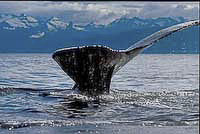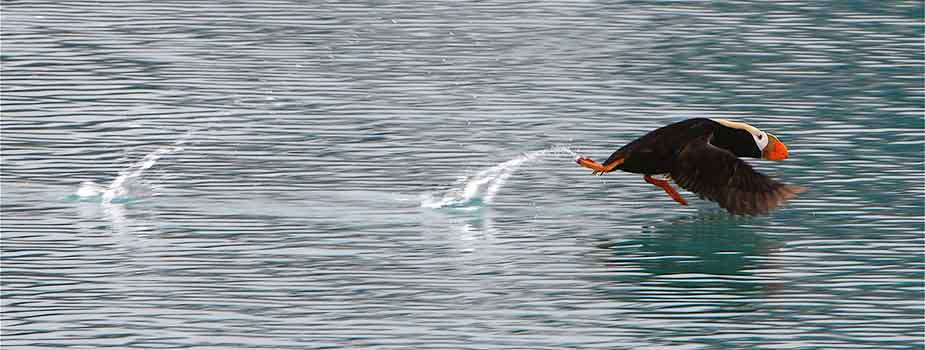CONSERVATION IN FOCUS
“The ocean is our blind spot...
Ever since the first humans gazed, awed, out
to sea, we have held certain truths to be selfevident:
that the ocean is infinite, inexhaustible,
boundlessly tolerant of whatever abuse we
hurl at it. Wrong.”
Julia Whitty, writing in NRDC’s OnEarth
(www.onearth.org/12spr)
The marine world, at least beyond the surf zone, is out of sight and out of mind for many people. Each Conservation in Focus voyage—Cloud Ridge’s “classroom afloat”— embodies the true spirit of expeditionary discovery and is designed to expand your understanding of the natural history of marine and terrestrial ecosystems and provide opportunities for exploring the global ocean realm. Our multi-disciplinary staff of naturalists includes Geoff Hammerson, Audrey Benedict, Sarah Drummond, Jennifer Hahn, Marilyn Hailbronner, and the photographic team of Bob Rozinski and Wendy Shattil. All have dedicated their expertise to portraying the inherent beauty of the natural world as well as the environmental dramas that threaten the fragile fabric of life. We’ll also spend time with scientists whose research is revealing—thread by thread— the intricate linkage between the global ocean and terrestrial ecosystems. embodies the true spirit of expeditionary discovery and is designed to expand your understanding of the natural history of marine and terrestrial ecosystems and provide opportunities for exploring the global ocean realm. Our multi-disciplinary staff of naturalists includes Geoff Hammerson, Audrey Benedict, Sarah Drummond, Jennifer Hahn, Marilyn Hailbronner, and the photographic team of Bob Rozinski and Wendy Shattil. All have dedicated their expertise to portraying the inherent beauty of the natural world as well as the environmental dramas that threaten the fragile fabric of life. We’ll also spend time with scientists whose research is revealing—thread by thread— the intricate linkage between the global ocean and terrestrial ecosystems.
Whether you are interested in conservation issues close to home or in the most remote corners of our changing planet, learning new ways to tell a compelling “natural history story” or to share your observations of the natural world with others helps sharpen the focus on conservation issues. Each voyage provides opportunities to explore the natural world but also to master the creative, technical, and presentation skills required to make both writing and visual media—photography and art—more powerful tools for conservation. Long before the camera became a standard piece of field equipment, expedition naturalists kept illustrated field journals in which to record their discoveries and observations. Natural history artists continue to play a crucial role in creating a conservation constituency. Delivering a strong conservation message requires a thorough understanding of your subject—but also the knowledge that environ mental threats to the global ocean realm matter to all of us. Wherever we go, we’ll portray the intricate complexity of marine ecosystems but also learn what scientists are discovering and doing about the far-reaching ramifications of global warming, ocean acidification, the thinning and disappearance of polar sea ice, the effects of overfishing on seabird and sea mammal populations, and the ways in which the immense midocean gyres, aswirl in plastic detritus, are impacting the entire marine food chain. Together, we’ll produce a book for each voyage that reflects what we’ve learned—a visual memoir that captures the essence of place, the fascinating adaptations of marine plants and animals, new research highlights, and key conservation issues. mental threats to the global ocean realm matter to all of us. Wherever we go, we’ll portray the intricate complexity of marine ecosystems but also learn what scientists are discovering and doing about the far-reaching ramifications of global warming, ocean acidification, the thinning and disappearance of polar sea ice, the effects of overfishing on seabird and sea mammal populations, and the ways in which the immense midocean gyres, aswirl in plastic detritus, are impacting the entire marine food chain. Together, we’ll produce a book for each voyage that reflects what we’ve learned—a visual memoir that captures the essence of place, the fascinating adaptations of marine plants and animals, new research highlights, and key conservation issues. |
